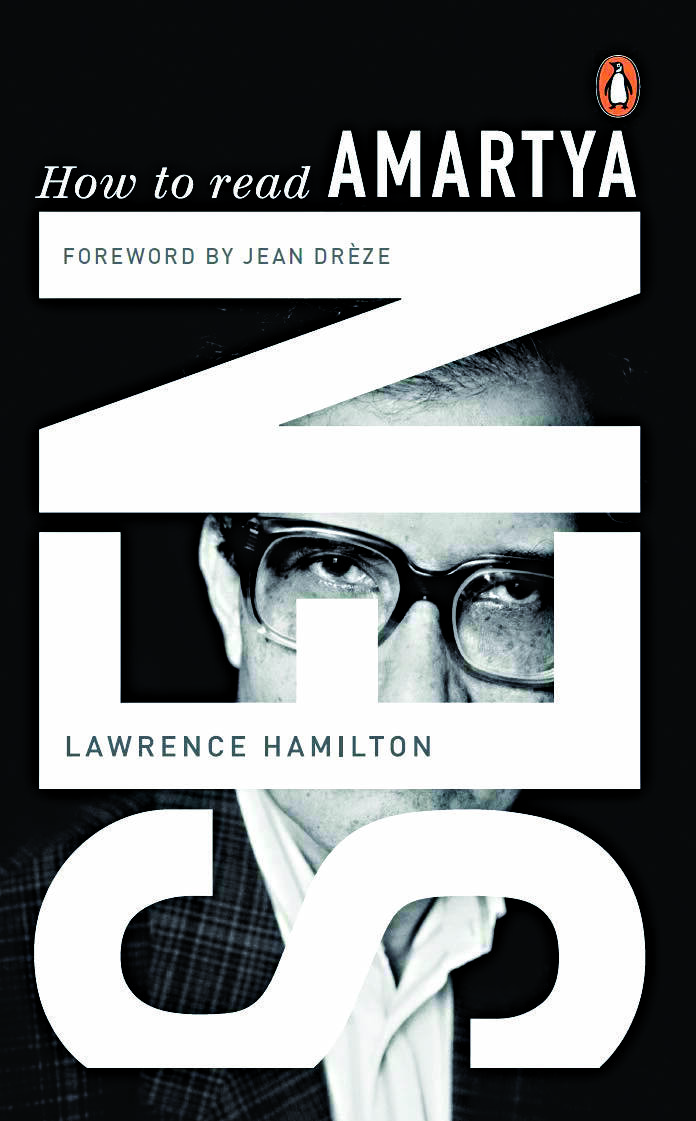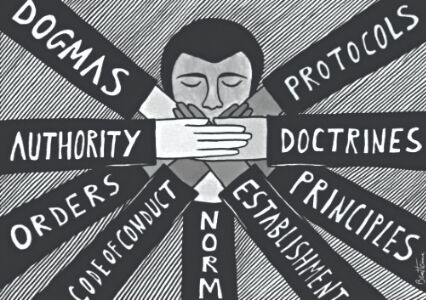"How to Read Amartya Sen" | Towering intellectual contributions
In How to Read Amartya Sen, Lawrence Hamilton reconstructs Sen's critiques of the major philosophies of his time, assesses his now-famous concern for capabilities as an alternative for thinking about poverty, inequality, gender discrimination, development, democracy and justice, and unearths some overlooked gems; Excerpts:
Author: Lawrence Hamilton
Publisher: Penguin India
There are a number of ways in which freedom is central to the work of Amartya Sen. Right across his many contributions to economics, philosophy and politics, he is driven to defend a nuanced and practical view of freedom. In this chapter, I suggest that, as he himself explicitly articulates in The Idea of Justice (IJ), the freedom he propounds and defends is best described as ‘effective freedom’, related to the fact that ‘a capability is the power to do something’ (IJ: 19). It follows that I shall argue that for Sen freedom is ‘effective power’. As he puts it, ‘[t]he question whether a person can bring about the objects of her reasoned choice is crucial to the idea of freedom that is being pursued here … [It is achieved by means of] direct control … or “indirect power”… the issue of effective power’(IJ: 301–2).

Moreover, as will become clear in this chapter, this view of freedom does not contradict Sen’s repeated assertion that ‘[f]reedom is an irreducibly plural concept’ (RF: 585; DF; IJ: 227–30, 301–5). It is this ‘plural’ view of freedom as effective power that underpins and follows from his concern for capabilities, his alternative and rich account of development, and his thoughts on justice and democracy. Also, though, and of much greater significance than has so far been suggested, this idea of freedom as effective power is closely linked to much of Sen’s earlier work on preference and choice. As I shall argue, this is the case because freedom, for Sen, is ultimately about the kind of economic, social and political environment that enables a person’s preferences to be effective. In other words, freedom too remains grounded in his first love – social choice – however modified and humanized via a sensibility to the demands of development and capabilities opportunity.
So I begin by looking at the three main ways in which freedom has been understood in the philosophical, political and economic literature. I then move on to how Sen links preference to freedom, particularly via rationality. I then show how, in time, this ends in a clear account of freedom as effective power and how this differs from most mainstream views of freedom. I end with a short account of his analysis of ‘indirect power’, adding a few slight concerns, which may (or may not) form the basis of criticisms of Sen on freedom. I conclude that, although Sen explicitly positions himself in the ‘positive’ freedom camp, his thoughts on freedom constitute the basis for a fourth, more comprehensive, account of freedom as power.
Literature
Like most thinkers and writers in English, Sen uses the terms ‘liberty’ and ‘freedom’ interchangeably. Pitkin (1988) and Williams (2001) are exceptions to this rule, but the distinctions they draw are so fine that nothing much hangs on them, at least not for an understanding of Sen’s view, so I will follow the general trend and use the terms interchangeably.
There have been three main ways of thinking about freedom since the late eighteenth century: negative freedom, positive freedom and republican freedom. These are now terms of art in political theory and philosophy, but a little time spent on them may be helpful in situating Sen’s alternative vision.
Defenders of negative freedom argue that to be free is to act unimpeded, to do what one wants or chooses without external obstacle or impediment. Jeremy Bentham and later, most famously, Isaiah Berlin maintained that it is for this reason that it is best to think of freedom as a ‘negative’ concept: its presence is said to be marked by the absence of something – in particular, an impediment or obstacle that inhibits the agent from doing what she or he wants or chooses (Bentham 1970 [1781]; Berlin 1996 [1969]). This way of thinking has its source in Thomas Hobbes’s diligently naturalist and negative concept of freedom, where freedom just means non-obstruction of action, as the water in a canal (or ‘Channel’) is free when unimpeded (Hobbes 1996 [1651]: 146). This view takes various forms in John Locke, Friedrich Hayek, Robert Nozick and others, but all retain an emphasis on its negative characteristic, and especially among Sen’s important philosophical and economic contemporaries, such as John Rawls, Milton Friedman, Nozick and Hillel Steiner, it retains this basic ‘negative’ structure. As Rawls puts it, ‘this or that person (or persons) is free (or not free) from this or that constraint (or set of constraints) to do (or not to do) so and so’ (Rawls 1973: 176). In these kinds of liberal and libertarian contractarian thinkers, freedom and unfreedom are understood relative to potential impediments or obstacles created by the actions of others and dependent upon whether these ‘others’ had a right to act as they did (Nozick 1974: 262; cf. Hamilton 2014a). Any action that imposes an impediment is therefore an instance of coercion, the epitome of unfreedom on this view.
The second important view of freedom is what Berlin calls ‘positive’ freedom. By contrast to ‘negative’ freedom – where to be free involves the mere absence of (external) impediments – ‘positive’ freedom is linked to concepts such as ‘self-determination’, ‘self-realization’ or ‘autonomy’, that is, the conditions or prerequisites for determining, controlling or autonomously deciding how to lead one’s life. In Berlin’s formulation, this is then linked to authoritarian forms of political power based on a spurious argument: if the values and conditions in question are, more or less, the same for all, and knowledge of them is acquirable by all simply by dint of my knowing what is good for you, I have a warrant to coerce you to be free in this ‘positive’ sense. However, to get to this extreme point of view, one needs to add the existence of a social agency (a state, say) who is ‘the real me’ and thus all of whose actions are really mine so that none of its actions against me can even in principle count as coercion. So Berlin has misdiagnosed the basis of the threat of totalitarianism: the culprit is some thesis about the relation between the individual and social agency and not the positive conception of freedom (Geuss 1995, 2001; Hamilton 2014a). This is important, for as we will see Sen, if anything, is closest to the ‘positive’ view of freedom; and he is relentlessly opposed to allowing room for authoritarian or totalitarian political power, helped by his adherence to social choice and the primacy of preferences and his associated resolute insistence on human diversity.
The third important, countervailing view of freedom is the republican (or neo-Roman) view of freedom, which just over two centuries ago more or less disappeared from the mainstream, effectively being replaced by what we now call ‘negative’ freedom. It was a view of political freedom which took the condition of slavery to be the antithesis of freedom, that is, a person is unfree in so far as they live in ‘potestate domini’, in the power of a master. Of late, this third view of freedom has been made famous again, principally in the works of Quentin Skinner and Philip Pettit. In short, to be free, in this sense, is to be an active citizen within a free state, that is, to be an active citizen in the sense that one is not in the power of someone who can interfere on an arbitrary basis – ‘without having to be guided by their [the citizen’s] readily avowable interests’ (Pettit 2001: 18). In other words, citizenship status, and all that goes with it, ensures that the ‘rulers’, supposedly especially under democratic conditions, cannot arbitrarily interfere in the lives of citizens; the rulers rule by law, not by means of arbitrary diktat or interference.
This republican view of freedom is contrasted with ‘negative’ freedom as, unlike the latter, ‘even if people make choices without interference – even if none of the options available are put beyond their reach – they will be unfree in the making of those choices, according to the republican view, if they have to act
in the presence of someone who could interfere on an arbitrary basis’ (Pettit 2001:18; my emphasis; see also Pettit 1997; Skinner 1997, 2002). Republican freedom requires, therefore, not just the absence of interference but also the absence of a power of arbitrary interference by others: the absence of what Pettit calls domination (cf. Weber 1978; Lovett 2010;
Hamilton 2014a). Pettit goes on to suggest that Sen’s theory of freedom coincides with a republican approach as it similarly emphasizes the connection between freedom and non-dependency, between freedom and being independent of the will of another.
Excerpted with permission from Lawrence Hamilton’s How to Read Amartya Sen, published by Penguin Random House



